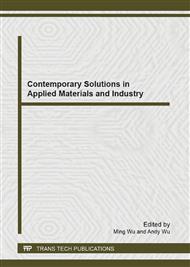p.611
p.614
p.617
p.620
p.624
p.633
p.639
p.644
p.649
Heart Sound Monitor for Bio-Signal Learning
Abstract:
This research presents the design and development of the heart sound monitor for bio-signal learning which can be worked with a personal computer. The prototype will receive the heart sound via the condenser microphone built-in the stethoscope. The condenser microphone will be conversed the air pressure from heart beats to electrical signal that signal will transformed to computer via sound card. The sound card will be conversed the analog signal to digital signal for process by heart sound processing program developed by LabVIEW program. The signal will be analyzed with short time Fourier transforms in heart sound processing program by graphical user interface. The user is able to select a band pass of signal for filter and choose the power spectrum of heart sound for display. The output database from this prototype is necessary for Medical Education or Clinical Practice. The prototype was tested and it worked satisfactory.
Info:
Periodical:
Pages:
644-648
Citation:
Online since:
April 2013
Authors:
Keywords:
Price:
Сopyright:
© 2013 Trans Tech Publications Ltd. All Rights Reserved
Share:
Citation:


